I'm not afraid of snakes or spiders or bats, but every time I see those thrasher eyes they threaten to rekindle an atavistic fear somewhere deep within me.

On February 12, near the entrance to Chapel Trail Nature Preserve near our South Florida home, I heard the distinctive double phrases of a thrasher's song. Similar enough to that of the related mockingbird's, it might be overlooked, but this bird's song seemed to overwhelm the sounds of its much more common relatives.
If the 30-second video does not appear in the space below, follow this link
A few Brown Thrashers nest in our general area but so far they have appeared locally only during migration and winter.
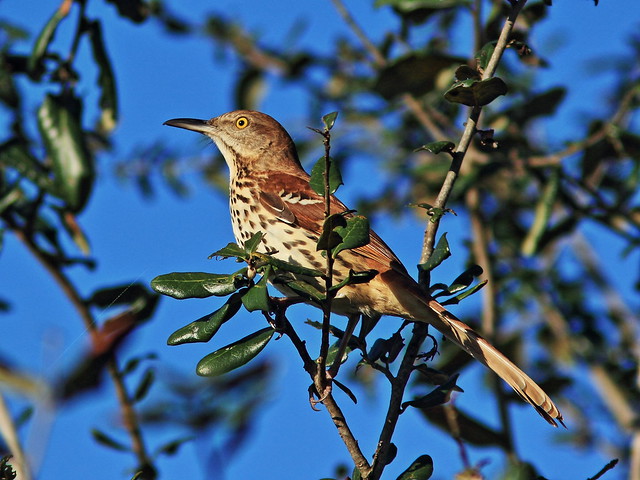
Alert and often secretive, their brown backs sometimes look so red that when one flashes by I can mistake it for a cardinal.

Thrashers are more often heard than seen, either because of their distinctive loud song and calls, or by the noise they create while "thrashing" about in leaf litter, scratching with both feet to uncover insect prey. It is nice to find one out in the open...

...but in many of my photos they are obscured by foliage.
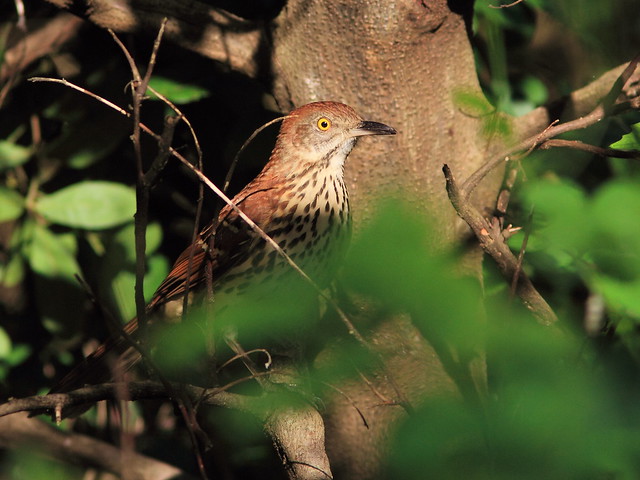
Actually, the thrasher may have gotten its name, not because of any wild and violent movement on its part, but from an old English word, "thresher" or "thrusher," meaning a thrush. REFERENCE
Indeed, mockingbirds, catbirds and thrashers are grouped in the family Mimidae, or Mimic Thrushes. Their body and bill profiles are all quite similar.
Northern Mockingbird:
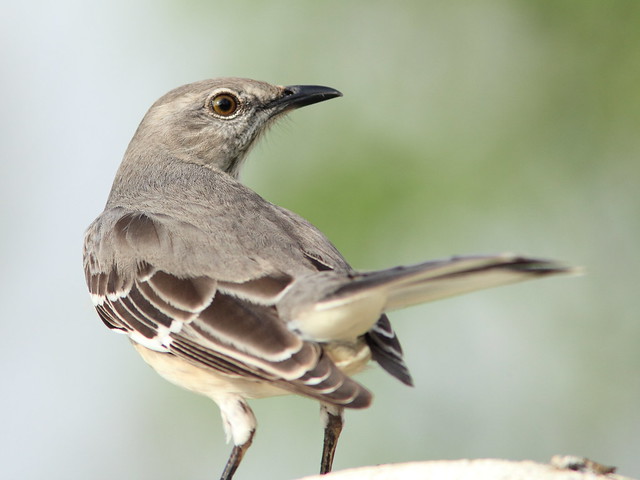
Gray Catbird:

Before I took up photogrpahy I saw Long-billed Thrashers in south Texas, Crissal and Bendire's Thrashers in New Mexico, and California Thrashers in (where else?) California. Here is a Curve-billed Thrasher photographed in New Mexico:
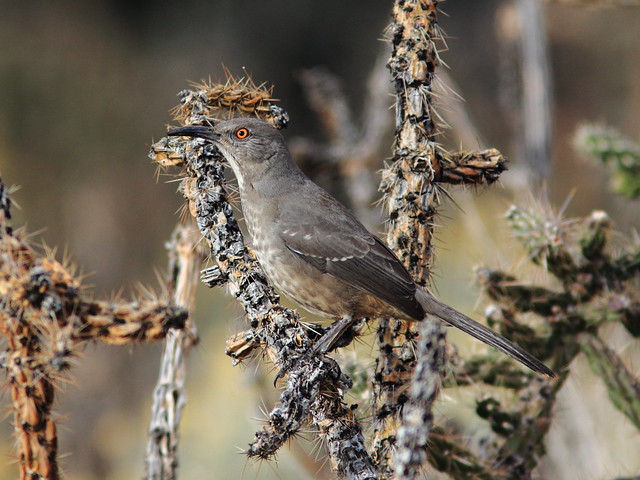
Sage Thrasher in the Texas Panhandle:

I did bring a pocket camera to California, and though I did not capture any thrashers, my favorite shot was of two of our granddaughters checking out a Redwood tree in Muir Woods.
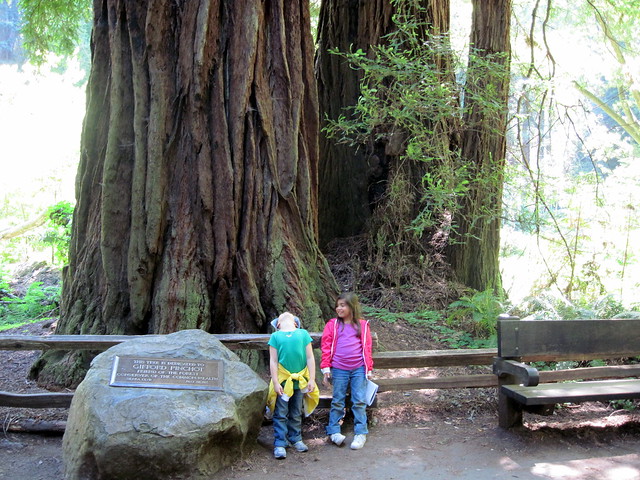

Kenneth, I like the thrashers. They are interesting birds. I have seen quite a few of them but I still need to see the Sage and California thrashers. I saw my first ever Brown thrasher in Ft. Myers, FL back in 2003. I saw one there again this year when I went to visit my brother in Cape Coral, FL about a month ago. You got some nice photos there and a funny story!
ReplyDeleteI have them all winter long at my feeders. I make sure I have plenty of suet cakes for them and the bluejays.
ReplyDelete